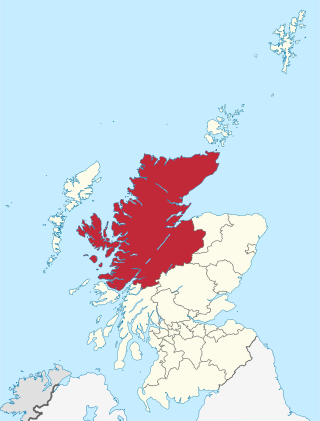
Highland is a council area in the Scottish Highlands and is the largest local government area in the United Kingdom. It was the 7th most populous council area in Scotland at the 2011 census. It shares borders with the council areas of Aberdeenshire, Argyll and Bute, Moray and Perth and Kinross. Their councils, and those of Angus and Stirling, also have areas of the Scottish Highlands within their administrative boundaries.

Lochaber is a name applied to a part of the Scottish Highlands. Historically, it was a provincial lordship consisting of the parishes of Kilmallie and Kilmonivaig, as they were before being reduced in extent by the creation of Quoad Sacra parishes in the 19th century. Lochaber once extended from the Northern shore of Loch Leven, a district called Nether Lochaber, to beyond Spean Bridge and Roybridge, which area is known as Brae Lochaber or Braigh Loch Abar in Gaelic. Lochaber is now also used to refer to a much wider area, one of the 16 ward management areas of the Highland Council of Scotland and one of eight former local government districts of the two-tier Highland region. The main town of Lochaber is Fort William.
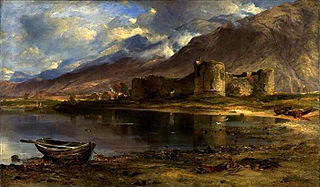
The Battle of Inverlochy occurred on 2 February 1645 during the Wars of the Three Kingdoms when a Royalist force of Highlanders and Confederate Irish troops under the overall command of James Graham, 1st Marquess of Montrose, routed and largely destroyed the pursuing forces of Archibald Campbell, 1st Marquess of Argyll, who had been encamped under the walls of Inverlochy Castle.
Arisaig is a village in Lochaber, Inverness-shire. It lies 7 miles south of Mallaig on the west coast of the Scottish Highlands, within the Rough Bounds. Arisaig is also the traditional name for part of the surrounding peninsula south of Loch Morar, extending east to Moidart. Etymologically, Arisaig means "safe bay". It lies in the Scottish council area of Highland and has a population of about 300.

Morar is a small village on the west coast of Scotland, three miles south of Mallaig. The name Morar is also applied to the northern part of the peninsula containing the village, though North Morar is more usual. The coastline of the area forms part of the Morar, Moidart and Ardnamurchan National Scenic Area, one of 40 such areas in Scotland, which are defined so as to identify areas of exceptional scenery and to ensure its protection by restricting certain forms of development.

Lochaber High School is a six-year comprehensive secondary school located in the town of Fort William, Lochaber, in the Highland region of Scotland.

The Battle of Mulroy was a Scottish clan battle fought in August 1688 in the Lochaber district of Scotland. It was fought between the Clan Mackintosh who were supported by government troops under Kenneth Mackenzie of Suddie against the Clan MacDonald of Keppoch who were supported by the Clan Cameron over disputed lands in the Braes of Lochaber. The battlefield has been inventoried and protected by Historic Scotland under the Scottish Historical Environment Policy of 2009.

Clan MacDonald of Keppoch, also known as Clan MacDonellof Keppoch or Clan Ranald of Lochaber, is a Highland Scottish clan and a branch of Clan Donald. The progenitor of the clan is Alistair Carrach MacDonald, 4th great-grandson of the warrior Somerled. The clan chief is traditionally designated as the "Son of Ranald's son".

Kilmallie is a civil parish in Lochaber, in the west highlands of Scotland. It is centered on the village of Caol, near Fort William and extends to Banavie and Corpach. It gives its name to the local shinty club, Kilmallie Shinty Club as well as two local churches, Kilmallie Free Church of Scotland and Kilmallie Parish Church of Scotland.
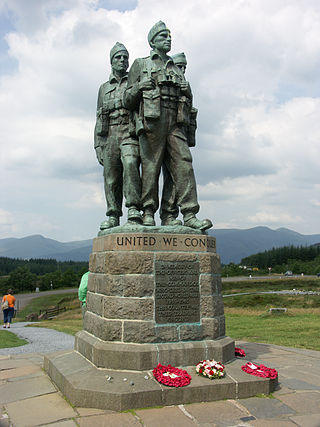
Spean Bridge is a village in the parish of Kilmonivaig, in Lochaber in the Highland region of Scotland.
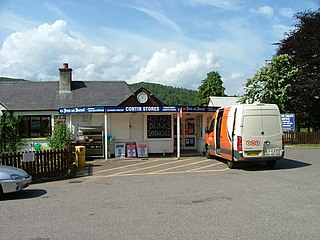
Contin is a Ross-shire village, and a civil parish and community council area between Strathpeffer and Garve in the Highland council area of Scotland. The parish has a population of 675.
The Rough Bounds, in the Scottish Highlands, is the area of West Inverness-shire bounded by Loch Hourn, Loch Shiel, and Loch Moidart, consisting of the districts of Knoydart, North Morar, Arisaig and Moidart. The area is famous for its wildness and inaccessibility and remains very sparsely populated.

Inverness-shire is a historic county, registration county and lieutenancy area of Scotland. Covering much of the Highlands and Outer Hebrides, it is Scotland's largest county, though one of the smallest in population, with 67,733 people or 1.34% of the Scottish population.

Roybridge is a small village, that lies at the confluence of the rivers River Roy and River Spean, located three miles east of Spean Bridge, in Kilmonivaig Parish, Inverness-shire, Scottish Highlands and is in the Highland administrative area.

The Keppoch Murders is the name given to the murders of Alexander MacDonald, 12th of Keppoch and his brother Ranald, as a decapitation strike by rival claimants to the chieftainship of the Clan MacDonald of Keppoch. The murders took place on September 25, 1663, during a brawl in the mansion of Insch, just outside the village of Roybridge, Lochaber. The identity of the killers, Alexander Macdonald, Keppoch Tacksman of Inverlair, and his six sons, were well known. Sir James at Dunelm Castle was eventually persuaded by the war poet Iain Lom to apply to the Privy Council in Edinburgh for letters of fire and sword in order to lawfully revenge their deaths.
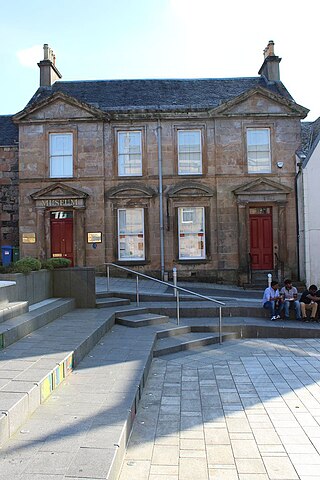
The West Highland Museum tells the story of the Scottish Highlands and the Islands. It aims to cover every aspect of West Highland history, including that of Fort William, where it is located in a listed building in the centre of the town. It also hosts other exhibits for archaeology and wildlife. The museum, which has always been independent, is a member of Museums Galleries Scotland.

The Lord of Lochaber was a title in the peerage of Scotland.

Cille Choirill is a 15th-century Roman Catholic church situated in Glen Spean in Lochaber, Scotland. Dedicated to St Kerrill,, it was possibly built by Cameron of Lochiel.

Archibald Clerk (1813–1887) was a minister of the established Church of Scotland and one of the leading Gaelic scholars of the Victorian era.

The Raids on Lochaber and Shiramore took place in the Scottish Highlands between 22 May and 31 August 1746 and were part of the closing operations of the British-Hanoverian Government to bring to an end the Jacobite rising of 1745. Sometimes referred to as the "mopping up" operations, many rebels surrendered themselves and their arms, while others were captured and punished. It also included the hunt for the Jacobite leader Bonnie Prince Charles Edward Stuart otherwise known as the Young Pretender. Most of the work was done on behalf of the Government by the Independent Highland Companies of militia, the Campbell of Argyll Militia and also Loudon's Highlanders regiment.





















